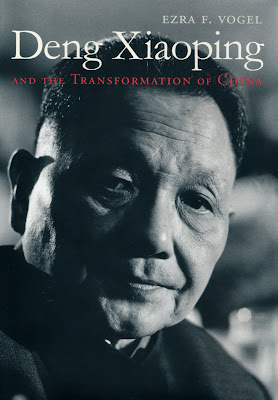Non-Fiction: The Devil in the White City
Listen to the perfect playlist while reading:
Author: Erik LarsonGenre: Non-Fiction; True Crime; History
Publication Date: 2003
Number of Pages: 390
Geographical Setting: United States
Time Period: Late 19th century
Plot Summary: On the eve of the four hundredth anniversary of Christopher Columbus' arrival in the New World, Chicago hastily plans a fair that will put Paris' Universal Exposition of 1889 to shame. At the same time, an unknown villain puts his own plans into action that will make the Windy City, and the World's Columbian Exposition, infamous for years to come-- plans that will claim the lives of over two dozen people before he's finished.
Subject Headings: Serial murderers -- Illinois -- Chicago -- Biography.
Serial murders -- Illinois -- Chicago -- Case studies.
Appeals
Narrative: Moderate
While true crime offers much to keep readers entertained, Larson offers a compelling story to go with it. Moderate narratives "mix story with facts and ask more of readers than to simply read for the story itself" (Wyatt, p. 6). Larson's gripping storytelling and mix of dialogue and quotations are sure to offer readers something to hold onto (if they aren't holding onto their seats already).
Characterization: Developed
Fitting the nature of mystery and detective work, Larson allows the historical figures in White City to be realized naturally and over time as the story of the World's Columbian Exposition comes together. Larson understands that "some readers love to get to know the character over a long period, while others find that frustrating and...need to know who is good or bad" (p. 13). Larson tells the story of the main figures' backgrounds at the beginning, letting us know who to root for and who to be wary of, and narrates their development as the story progresses. Our two main figures, Daniel H. Burnham and H.H. Holmes, are great examples of this.
Language: Compelling
As Wyatt describes Simon Singh and Matt Ridley, Erik Larson has a knack "for making the complex understandable and enthralling" (p. 21). Terms such as that used in informing the reader of architecture, Chicago's infrastructure, and landscaping are put into terms that are not only simple to understand but also rich in imagery.
3 terms that best describe this book: Disturbing, richly detailed, reads like fiction
Read-Alikes:
In the early 1900s, indigenous members of the oil-rich Osage Nation begin dying under mysterious circumstances in disturbing numbers. When the United States government looks into the deaths, a crime unlike any other is revealed.
Similarities: Readers who prefer their non-fiction told with an enthralling narrative will find one in Killers, and the true crime will keep White City readers on the edge of their seats.
In the late 19th century, a murderer emerged in Austin, Texas who, by the end of their crimes, killed eight Texans and injured eight more. As the killer has never been identified, the story still holds secrets to be unraveled.
Similarities: With a compelling story and atmospheric narrative, readers who enjoyed White City will find Midnight Assassin something else to turn their investigative skills to.
Between 1995 and 2001, a French man named Stéphane Breitwieser and his romantic partner, Anne-Catherine Kleinkaus, stole over 200 works of art across Europe. This account of their crimes, including the author's interviews with Breitwieser and the officers involved in the case, is sure to keep readers guessing how the couple could have gotten away with it for so long.
Similarities: Like White City, Art Thief weaves together this complex tale of true crime without losing the detail, all while drawing the reader further into the compelling story.
For those looking for some fictional crimes steeped in history...
Vivian, a 14-year-old girl in 1915 Chicago, goes undercover as a boy in a street gang to uncover the secrets of a mysterious serial killer, all while finding clues to the disappearance of her sister.
Dr. Courtine, a reclusive academic in 1881, accepts an invite from an estranged friend to visit the cathedral of Thurchester to rekindle their friendship and to further his studies. While there, the recent death of a banker leads Courtine to discover the links between this mystery and that of the double homicide that took place in Thurchester 200 years before.
After Scotland Yard recovers from its inability to catch Jack the Ripper, Walter Day, a new detective on Scotland Yard's Murder Squad, is tasked with finding the criminal who killed one of his fellow detectives.
Wyatt, N. (2007). The readers' advisory guide to nonfiction. American Library Association.

.jpg)
.jpg)






Hello Annaliese!
ReplyDeleteI am curious, is this book about H. H. Holmes? I was going to look it up, but I wanted to be surprised if my intuition was right. I am not a huge nonfiction reader, but I do try to read at least one nonfiction book a year, and this one just made it on the list. Your vibrant and enthralling description had me on the edge of my seat without even opening a page myself! Killers of the Flower Moon is an excellent choice for a read-alike here, as both books are true crime stories and they also take place at roughly the same time in America, just in a completely different setting and under completely different circumstances. It shocked me to remember that both of these heinous crimes happened within 30 years of one another and marked the beginning of the era of the "serial killer".
Really killed it with the playlist. I wish I would have had that when I read this book! This was one of the first non-fiction books I read for fun after college. Excellent annotation and great readalikes. This makes me want to read it again!
ReplyDelete